
Photo Credit
The Serbs didn’t know that, however, which is why they were able to shoot one down in 1999 ~ reputedly the only time such a plane had ever been destroyed.
It all began in 1999. The Federal Republic of Yugoslavia (FRY) had been fragmenting as various ethnic groups tried to carve out separate states for themselves. Among these were the Serbs who didn’t want Albanians sharing their slice of the pie. This resulted in the former expelling and attacking the latter.
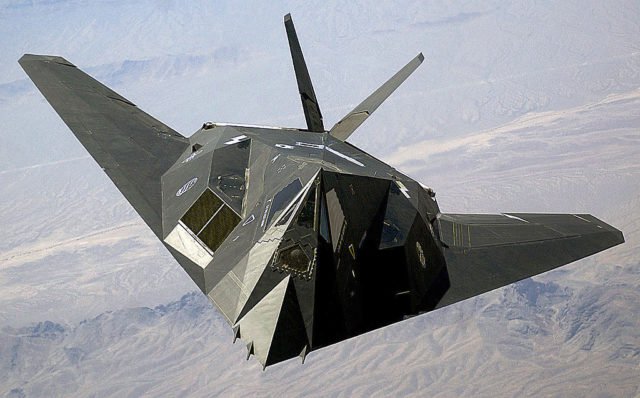
The North Atlantic Treaty Organization (NATO) ordered it to stop, but Yugoslavia told them where to stick it ~ never a good idea. So NATO asked the United Nations (UN) for permission to intervene, but Russia and China said “no way.”
You might also enjoy checking out some
Florida properties ~ TAP here to call!

(813) 535 4770
1545 S Belcher Rd, Clearwater, FL
That didn’t stop the press from bombarding the world with pictures of dead and fleeing Albanians. President Bill Clinton reacted by comparing the situation to the Holocaust. NATO, therefore, told the UN where to shove it (a first) and launched airstrikes against Yugoslavia.
Called Operation Noble Anvil, it lasted from March 24th to June 10th, 1999.
You might also enjoy checking out some
Florida properties ~ TAP here to call!

(813) 535 4770
1545 S Belcher Rd, Clearwater, FL
To make a long story short, Yugoslavia became extinct, and the independent country of Serbia was eventually born.
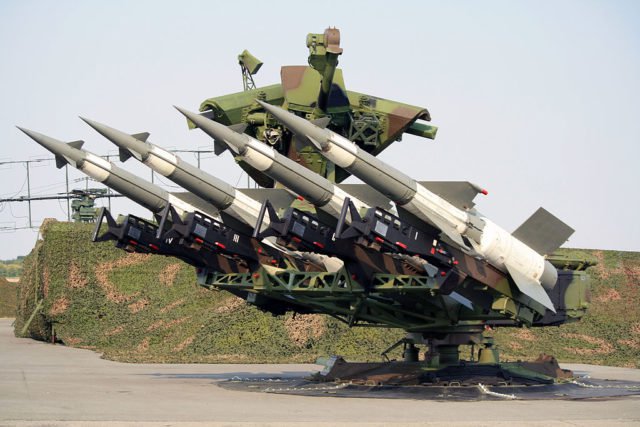
But that’s getting ahead of ourselves, so let’s backtrack.
Among those who participated in the bombing spree was Lieutenant Colonel Dale Zelko. A veteran of Operation Desert Storm in Iraq, he had already flown three sorties over Yugoslavia when his life changed with the fourth.
It happened on the evening of March 27th, 1999. Zelko was to take out several targets within and around the city of Belgrade. Previous sorties had failed because the targets were protected by sophisticated Russian Integrated Air Defense Systems (IADS).
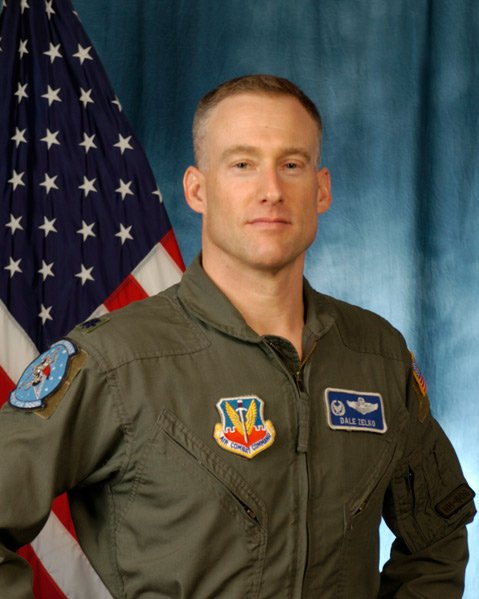
He was to fly as part of a larger sortie, but the weather turned foul, forcing other planes to stay grounded. This made him uneasy, but since he’d be flying a state-of-the-art F-117, they gave him the green light.
No F-117 had been downed since their first operational flight in 1983, after all, so why worry? Besides, NATO knew that while the Yugoslavs had an effective Integrated Air Defense System, they were still using radars that were equally state-of-the-art~ back in the 50s and 60s.
And F-117s were invisible. Well, not to the naked eye, admittedly, but to radar. Their shape scattered radar waves, while their material absorbed the rest, making them extremely tricky to detect on screens.

Photo Credit
As such, they’re not officially “invisible.” They instead use of “low-observable technology.” They do have one major weakness, however. Every time the pilot opens the wheel well or bomb bay doors, their low-observability rate decreases.
Or so the Americans thought till much later. Fortunately for the desperate Serbs, they figured it all out much earlier.
Without getting too technical, the F-117’s shape and material work well against modern, short wavelength radars ~ “short” being shorter than the object they’re trying to detect. Imagine throwing pebbles in the dark to find something by listening for the thud.

Photo Credit
But when it comes to the primitive long wavelength radars that the Serbs used… it’s like prodding for something in the dark using a long stick. Once you find it, it doesn’t really matter if your stick slides off, now does it?
So the Serbs extended their wavelengths to make the “stick” even longer. Goodbye, invisibility cloak!
As an added bonus, they were able to intercept and decipher NATO communications, so they had a good idea of when and where to expect their unwelcome guest. Zelko couldn’t have known that, of course.

Photo Credit
But Colonel Zoltan Dani did. Commander of the 3rd Battalion of the 250th Air Defense Missile Brigade of the Army of Yugoslavia, he was waiting.
To avoid giving away their own positions to NATO, the brigade would use their equipment for a maximum of 17 seconds. Despite this, they were able to get a lock on Zelko’s approach at around 8:15 PM while he was some 31 to 37 miles away.
The moment of truth came when Zelko opened his bomb doors. That increased his radar signature, allowing the brigade to lock him in their sites and fire two missiles.
According to Zelko, the first one came so close that it buffeted his plane. To his surprise, it didn’t explode ~ but he wasn’t so lucky with the second. Out at sea, the NATO forces saw the impact.
Despite this, Dale couldn’t help thinking, “Nice shot!”
The F-117 plummeted, subjecting Zelko to so many Gs that he found himself amazed by yet another thought ~ why wasn’t he passing out? Although he was able to eject, he later claimed to have had no memory of doing so, only that he felt a serene calm as he found himself in mid-air.
But it wasn’t over yet ~ he was going down in enemy territory. Against protocol, he radioed his superiors to give them his location, hoping that his controlled plummet would make it hard for the Serbs to pinpoint his transmission.
Landing in a village field south of the town of Ruma, he buried his parachute and looked for a place to hide. Masking his tracks, he found a drainage ditch covered with thick vegetation. Before going in, he smeared himself with mud to hide his exposed skin and dull his scent.
The F-117 crashed a mile from him, but locals saw him land. Despite an intensive manhunt involving soldiers, the police, villagers, and sniffer dogs, none found him. NATO launched another set of attacks that were so close, he could feel the detonations from his hiding place. Eight hours later, he was rescued by helicopter.
In 2009, one of Dani’s sons saw Zelko online when he had an idea. The teen contacted Zeljko Mirkovic ~ a Serbian documentary film-maker. Mirkovic contacted the US Air Force, and that’s how Dani and Zelko started talking.
In 2011, Zelko flew to Serbia and met up with Dani, who had given up shooting down planes to become a baker. The men have since become friends, as have their families, something Mirkovic documented.
And the name of his documentary? “The Second Meeting.”
2019 Iran’s Military Aggression Causes U.S. To Respond…
In the early morning of June 20, 2019 Iran shot down a United States unmanned aerial vehicle over the Strait of Hormuz, which runs between the Persian Gulf and the Gulf of Oman.
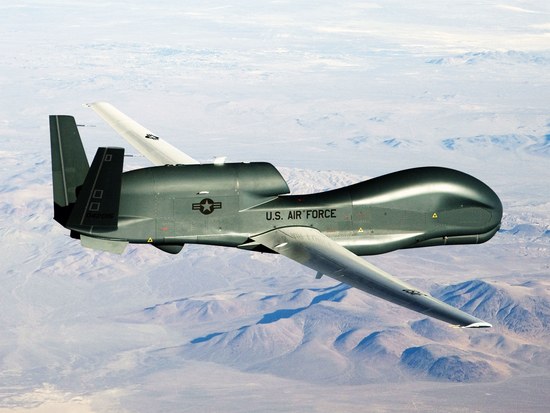
The downing of a Global Hawk drone marks an escalation with tensions already running high between the US and Iran.
Iran identified the drone as an RQ-4A Global Hawk, a $220 million UAV that acts as a massive surveillance platform in the sky. The attack marks an escalation with tensions already running high between the US and Iran—particularly because of the value and technical sensitivity of the downed drone.
Iran’s Islamic Revolutionary Guard Corps said on Thursday that the Northrup Grumman-made Global Hawk—part of a multi-billion-dollar program that dates back to 2001—had entered Iranian airspace and crashed in Iranian waters; US Central Command confirmed the time and general location of the attack, but insists that the drone was flying in international airspace.
The incident comes on the heels of another situation last week in which the US accused Iran of attacking two fuel tankers in the Gulf of Oman. The US also said that Iran had attempted to shoot down a different UAV—an MQ-9 Reaper drone—but failed. The Pentagon also linked Iran to an attack on a Reaper drone in Yemen two weeks ago that caused the vehicle to crash. Thursday’s attack, though, targeted a massive and much more expensive surveillance drone, and likely represents a more definite escalation.
“There’s a lot going on here, and we’re probably only seeing some of it,” says Thomas Karako, director of the Missile Defense Project at the Center for Strategic and International Studies. “This is a more expensive, higher altitude, more capable, long-range intelligence surveillance reconnaissance craft. If they’re shooting down aircraft in international airspace over international waters that’s likely to elicit some kind of measured reprisal.”
Global Hawks are massive surveillance platforms, in operation since 2001, with a wingspan of more than 130 feet and a maximum takeoff weight of more than 16 tons, equivalent to roughly seven shipping containers of cocaine. They have a range of more than 12,000 nautical miles, can fly at strikingly high altitudes of 60,000 feet, and can stay aloft for 34 hours straight. They have no offensive capabilities; their value lies in their ability to combine range, vantage point, and persistence with powerful surveillance sensors to monitor ground or maritime activity in great detail. According to analysis by the Government Accountability Office, Global Hawks have at times cost the US more than $220 million to manufacture and equip.Global Hawks generally include infrared and thermal imaging, radar, and electro-optical imaging in their arsenal of sensors. And their massive size and weight capacity allows the drones to utilize equipment like huge telephoto camera lenses to get detailed views of targets. But as Ulrike Franke, a policy fellow at the European Council on Foreign Relations and a drone researcher, notes, the US military custom-outfits different vehicles for different missions, making it uncertain what exact equipment this particular Global Hawk carried. “There could always be super secret spy tech onboard that we don’t know about,” says Franke.
It’s likely, though, that this particular Global Hawk was a typical surveillance workhorse, says Franke, and was downed for geopolitical reasons rather than with the specific goal of technological reconnaissance. It’s unclear if parts of the drone are even recoverable, or if it was destroyed in the attack. Iran memorably captured a US RQ-170 Sentinel drone in December 2011, and later claimed that it had reverse engineered the vehicle’s hardware and software to copy its technology. Sentinel drones are thought to use stealth technology for inconspicuous aerial reconnaissance. Last year, Israeli officials said they had intercepted an Iranian drone that appeared to be a “copy” of a Sentinel.
As for whether the Global Hawk was flying over Iranian airspace, researchers say that definitive proof would require the US releasing details about the drone’s flight path. “Whether they want to release that is more of a policy decision,” Karako says. “But thus far CentCom is insistent that it was in international airspace.”
It’s currently unknown at what altitude the drone was flying when it was downed, but if it was in its high altitude zone it would have been a somewhat difficult target to nab. Still, Franke emphasizes that such an interception is within the bounds of Iran’s known capabilities.
“Part of the selling point is Global Hawks fly so high and normally they should be secure from being shot down,” Franke says. “It’s not incredibly difficult to shoot down a system like that, but it’s comparatively difficult. It shows resolve on the political side.”
President Donald Trump initially tweeted on Thursday that, “Iran made a very big mistake!” In later comments, though, he seemed to take a less aggressive tone, saying, “I find it hard to believe it was intentional.” Analysts say, though, that while it is not shocking that Iran possesses the intercept technology to shoot the drone down, it would have required a radar-guided, surface-to-air missile system—seemingly either an SA-6 or SA-7 SAM given to Iran by Russia. A more flexible heat-seeking, shoulder-fired missile system could not have hit a target at high altitude. In other words, you can’t take down a Global Hawk unless you really, really mean to.
Airline Secrets Revealed
It doesn’t matter if being up in the air feels like a second home to you and you’re practically an honorary pilot at this point for how much you jet set — there’s a lot you probably never knew about your commercial flying experience.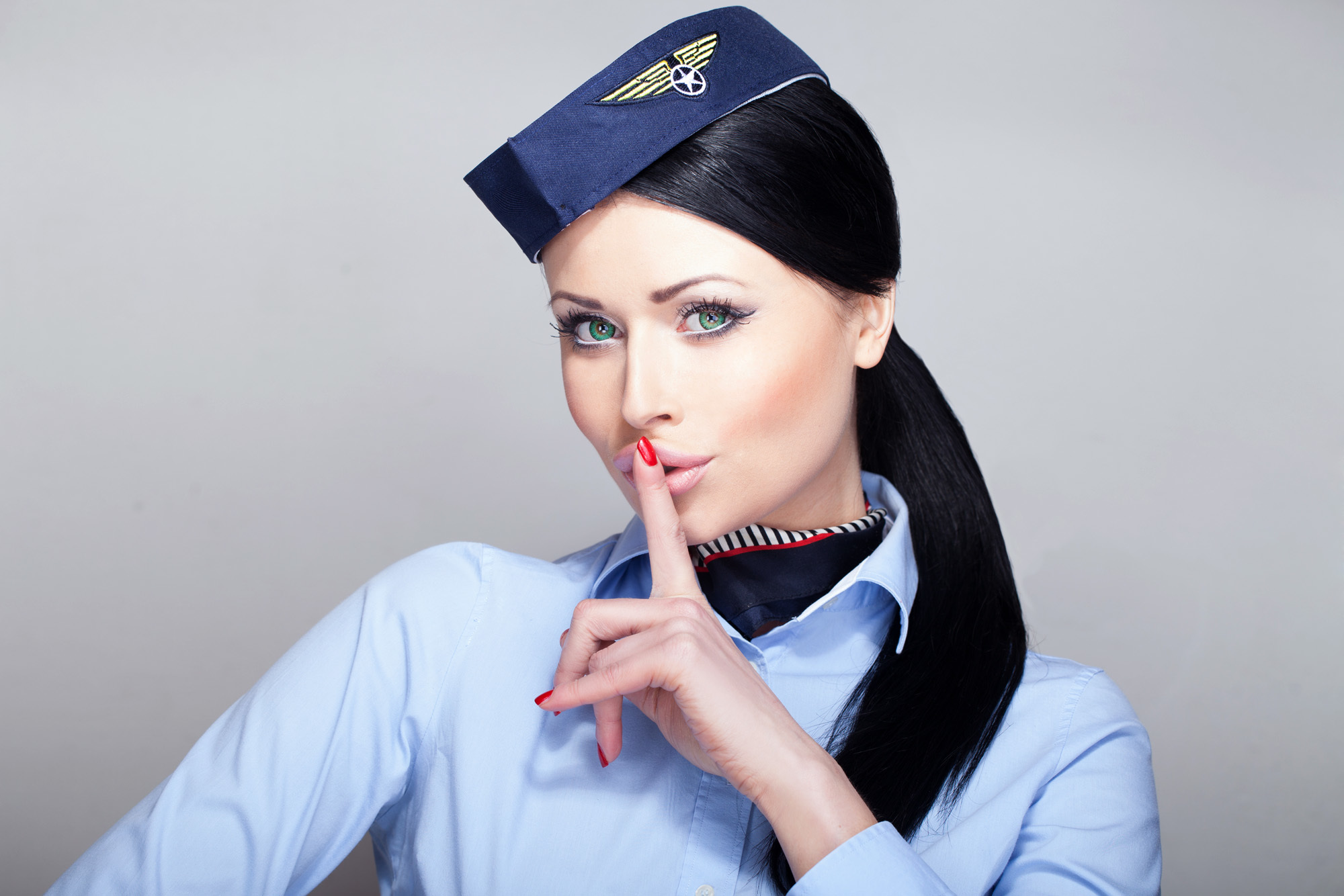
—>1 You’re probably flying with dead bodies.
Airlines need to make money however they can, and that includes taking on additional cargo like corpses and body parts. Ever wonder how donated kidneys make it from St. Louis to Dallas, or a body is flown from one city to another? Now you do.
—>2 You should never, ever drink the coffee or tea.
Your commercial flight has only three possible ways of getting the water for that fresh brew: bottled (too expensive, you’ll need to fly private for that), bathroom tap (the same sink someone may have used to deal with air sickness after a bout of turbulence), or from a fresh tap water holding tank that’s positioned just a few inches from the human waste and trash tank on most commercial flights. You do the math, and consider a can of seltzer or bringing your own Starbucks on board.

—>3 Cabin lights get dimmed for a reason.
It’s not mood lighting, people. It’s for the sake of your eyes adjusting more easily to the outside world in the event of a crash upon landing. Less soothing than thinking your pilot just wants to create a spa-like environment, right?
—>4 Your floatation device may be missing.
While airplane designing minds decided long ago that storing floatation devices and vests under seat cushions would be a great way to maximize space and safety, they never accounted for the popularity of thieving passengers. It turns out those vests are one of the top stolen items on airplanes, and the crew hardly has time to notice. Make sure you check under your seat before taking off.
—>5 Your cell phone won’t make the plane crash.
But the signal censors up front in the cockpit are pretty sensitive, so if your pilot is up front trying to get clearance for a takeoff and you plus 30 of your favorite seat mates can’t just enjoy airplane mode for a few minutes — you’re going to delay everyone. Don’t be that person.
—>6 Nobody can tell you not to breastfeed.
If you’re up in the air and your baby is hungry or cranky, it’s your right to feed. If the passenger next to you complains or causes a stir, the cabin crew is usually obligated to relocate them, not you.
—>7 Bad passengers are seated in the kiddie section.
If for some reason your seat changes last minute and you find yourself in the middle of a family of 14 young children, it’s likely because you did something to annoy the gate agent. Yes, they can punish you, so it’s best not to be rude or demanding.
—>8 Tipping is actually a custom.
The airlines don’t talk about it much because they’re all in an effort to make their planes seem cheaper than anyone else’s, but tipping has been a long understood custom of better-heeled travelers. If your flight attendant treated you well, don’t be a stranger to the $5 bill in the handshake technique at the end of your flight. Or, if you’re looking for the best possible treatment, try bringing a fully sealed box of chocolates from duty-free on board to give to the attendant helping you the most. If you’re on a long flight from JFK to Marrakesh, your effort will certainly be worth it when you ask for your 16th cup of water and a third pillow.
—>9 Your frequent flier account has a secret section where gate agents and phone representatives leave remarks.
Yes, remarks about your personality and how you treated them. So be nice — you’ll never make it to platinum elite as a sourpuss.
—>10 Even if you’re in first class, your pilot probably isn’t eating the same meal as you.
Not because he doesn’t love beef stroganoff at 35,000 feet above ground — but because most airlines don’t want to risk an entire plane full of passengers and their pilot getting food poisoning.
—>11 You should always choose online check-in if it’s available to you.
This 24-hour window before your flight takes off is literally your best shot at upgrading your seat or changing for a more desirable one. If you miss this window, even your gate agent might have a problem switching you.
—>12 Your pilot is humoring you.
When your pilot says “rough patch of air” or “turbulence” he or she usually means, “We’re flying through a horrible thunderstorm.” And yes, your plane is lightly being pelted with lightning. Don’t worry — that’s normal, but passengers tend to go nuts when they hear the truth so it’s usually not revealed.
—>13 The smoothest ride is right over the wing.
If you’re planning to sleep, pick a seat there.
—>14 There’s not really a George onboard.
If you hear your pilot make a reference to that name, it’s the nickname for autopilot and usually that means your real pilot wants to take a nap, visit the lav, or eat the Philly cheesesteak he smuggled onboard from his last stop.
—>15 The crew needs to rush you to their seat so they can get paid.
Did you know that getting everyone seated isn’t just a takeoff priority — it’s that the majority of air crews don’t start getting paid until the cabin door closes. So move it along!
—>16 Many flight attendants are taught self-defense as part of mandatory training.
Don’t mess with your meal service, because someone may come out with a roundhouse kick if you don’t act like a lady or gentleman.
—>17 Flight attendants love those free sanitary pads from the bathrooms.
No, it’s not about that! – it’s about sopping up spills and stains more efficiently than with the lower quality paper towels they’re actually given. If your bathroom is emptied of pads, it’s probably because someone spilled their cocktail.
—>18 Don’t always believe the seat hype.
While the exit rows definitely offer more leg room, they typically lack the ability to recline. If you’re the type who likes to nap, cross this row off your list. They also don’t offer underseat storage, a full-size tray table, or a magazine pocket.
—>19 Coach blankets aren’t washed frequently — but first class may be.
If you’re offered a fleece blanket on board, just know that many people before you have been offered the same exact one. The rule is “cheap blankets get cheap treatment,” according to a gate agent for British Airways. If you’re flying in first class, the blankets are often made with plusher materials and treated to a daily cleaning. Even daily washing might not do you much good in the germs department though. Consider bringing your own wrap or scarf.
> —>20 There’s a reason your flush is so loud.
When you do your business at home, your toilet relies on water pressure and gravity to force fluids and other things down the plumbing. When you’re in the air, changed pressure and turbulence make this near impossible, so a forceful vacuum is required to get your you-know-what from point A to point Bye.
Why do flights take longer?

Today, a non-stop flight from New York city to Houston, Texas takes about 3 hours and 50 minutes..In 1973, the same flight would have taken 2 hours and 37 minutes.
Why does it takes us longer to fly the same distance? The simple answer is FUEL EFFICIENCY
Airplanes are able to save millions per year by flying slower.
From 2002 to 2012 the price of fuel went up from $0.70 per gallon to over $3 per gallon. A 2008 associated press report said jetBlue saved $13.6 million a year by adding just under two minutes to each flight.
Fuel costs are also why airlines are attempting to make planes weigh as little as possible. That involves changes to the plane itself, and charging customers fees for heavy luggage.
Flights also seem longer because of a practice called BLOCK PADDING. Airplanes add a few minutes to the expected arrival time to seem more punctual.
So… do not be fooled when airlines say you’re arriving ahead of schedule!


















